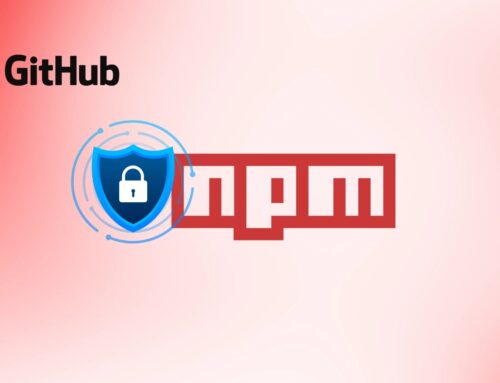
Beware of Fake Online Speedtest Application With Obfuscated JS Codes
The Silent Menace: Fake Online Speed Test Apps and Obfuscated JavaScript Malware
In the interconnected landscape of modern computing, even the most seemingly innocuous utilities can harbor significant threats. A sophisticated malware campaign has recently come to light, exploiting the trust users place in simple online tools like network speed tests. This campaign leverages cunningly disguised applications to deliver obfuscated JavaScript payloads, operating stealthily on Windows systems and posing a serious risk to data integrity and system security.
This blog post delves into the mechanics of this evolving threat, its deceptive tactics, and crucial remediation strategies. Understanding the intricacies of these attacks is paramount for IT professionals, security analysts, and developers charged with safeguarding digital environments.
Deception at Its Core: How Fake Speed Tests Deploy Malware
The attackers behind this campaign exhibit a high degree of sophistication in their social engineering tactics. They don’t just mimic speed test applications; they also masquerade as manual readers, PDF utilities, and even various search frontends. The core idea is to trick unsuspecting users into downloading and installing what appears to be a legitimate, helpful piece of software.
Once installed, these malicious utilities don’t immediately reveal their true nature. Instead, they operate covertly in the background, their primary function being the deployment of highly obfuscated JavaScript code. This obfuscation makes detection by traditional antivirus software challenging, allowing the malware to persist and execute its malicious functions undetected for extended periods.
The Stealthy Payload: Obfuscated JavaScript and Its Dangers
The use of obfuscated JavaScript is a critical component of this attack’s success. Obfuscation techniques deliberately obscure the code’s original intent, making it incredibly difficult for human analysts and automated tools to understand and identify malicious behavior. This allows the malware to perform a range of harmful activities, including but not limited to:
- Data Exfiltration: Stealing sensitive information such as login credentials, financial data, and personal files.
- Remote Access: Granting attackers unauthorized remote control over the compromised system.
- Further Malware Deployment: Downloading and installing additional malware, ransomware, or spyware.
- System Manipulation: Altering system settings, disabling security features, or creating backdoors.
- Botnet Participation: Enrolling the compromised machine into a botnet for distributed denial-of-service (DDoS) attacks or other illicit activities.
The silent nature of these operations means users may be completely unaware that their systems have been compromised until significant damage has already occurred.
Remediation Actions: Protecting Your Systems
Effective defense against these sophisticated threats requires a multi-layered approach. Here are critical remediation actions to mitigate the risk of falling victim to fake online speed test applications and similar malware campaigns:
- Verify Software Sources: Always download software only from official, trusted websites or reputable app stores. Avoid third-party download sites or unsolicited links.
- Exercise Caution with Executables: Be extremely wary of executable files (.exe, .msi, etc.) downloaded from unfamiliar sources. If in doubt, do not run them.
- Employ Robust Endpoint Security: Utilize advanced endpoint detection and response (EDR) solutions that can identify suspicious process behavior and obfuscated code patterns. Regular updates for antivirus and anti-malware software are non-negotiable.
- Implement Application Control: Restrict the execution of unauthorized applications to prevent malware from running. Whitelisting approved applications is a highly effective strategy.
- Network Monitoring: Continuously monitor network traffic for unusual outbound connections or communication patterns that could indicate data exfiltration or command-and-control activity.
- User Education and Awareness: Train employees and users to recognize social engineering tactics. Emphasize the dangers of installing unverified software and clicking suspicious links.
- Regular Backups: Maintain regular, secure backups of all critical data. In the event of a successful malware attack, this allows for system restoration without data loss.
- Patch Management: Keep operating systems, applications, and web browsers updated with the latest security patches to close known vulnerabilities that attackers could exploit.
Tools for Detection and Mitigation
| Tool Name | Purpose | Link |
|---|---|---|
| Windows Defender Advanced Threat Protection (ATP) | Advanced endpoint protection, EDR capabilities | Microsoft Defender for Endpoint |
| YARA Rules | Malware signature detection (requires custom rules for obfuscated JS) | YARA Project |
| Cuckoo Sandbox | Automated malware analysis (dynamic analysis of suspicious files) | Cuckoo Sandbox |
| Process Monitor (Sysinternals) | Real-time file system, Registry and process/thread activity monitoring | Process Monitor |
| ESET Endpoint Security | Comprehensive endpoint protection with advanced threat defense | ESET Endpoint Security |
Conclusion
The emergence of malware campaigns leveraging fake online speed test applications underscores a critical lesson in cybersecurity: vigilance is paramount. Attackers continuously refine their methods, exploiting user trust and the demand for seemingly simple utilities to deploy complex, obfuscated payloads. By adopting a proactive security posture, emphasizing user education, implementing robust technical controls, and staying informed about evolving threats, organizations can significantly strengthen their defenses against these insidious attacks. The digital landscape demands constant awareness and adaptation to protect against the silent menace lurking in plain sight.





